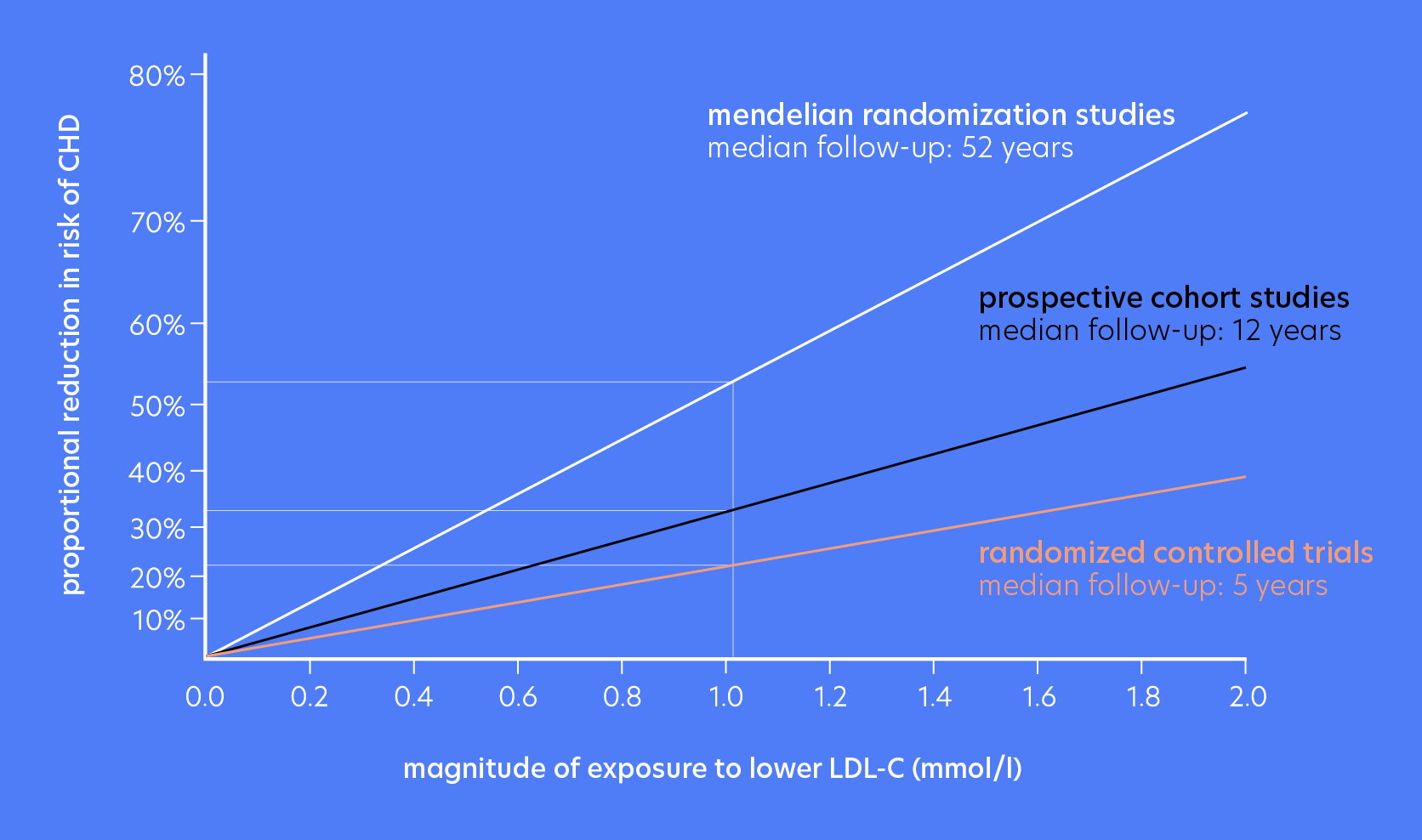LDL cholesterol
Lipoprotein metabolism and atherosclerosis
The liver plays a central role in lipid metabolism. It produces large very low-density lipoprotein (VLDL) particles that are enriched with triglycerides and cholesterol. In the bloodstream, an enzyme called lipoprotein lipase converts the triglycerides in the VLDL particles into free fatty acids, making them available as fuel for peripheral tissues such as muscle and adipose tissue. As these triglycerides are released, the VLDL particle becomes smaller and first transforms into intermediate-density lipoprotein (IDL) and then into low-density lipoprotein (LDL). Thus, LDL is an end product of the energy supply of the body through triglyceride metabolism and contains more cholesterol than triglycerides. LDL-receptors enable the liver to take up the LDL from the bloodstream. Similarly, remnants of chylomicrons, which are particles produced in the intestine from triglycerides obtained from the diet, undergo the same transformation and are also ultimately taken up by the liver.
LDL is a small particle that can pass through the endothelium of arteries, where it can be phagocytosed by macrophages resulting in formation of foam cells. The pathophysiology of atherosclerosis caused by LDL is described in the section Pathophysiology of Atherosclerosis.
History of LDL
The first evidence for the causal relationship between plasma LDL cholesterol and cardiovascular disease was provided more than 100 years ago. A Russian physician and researcher called Anitschkow, observed accelerated atherosclerosis in arteries of rabits that were fed an excess of cholesterol-rich egg yolk. Nowadays, extensive and unequivocal evidence that LDL cholesterol causes atherosclerosis is provided through observational, genetic, and animal studies as well as randomized controlled trials including hundreds of thousands subjects. In addition, large randomized, placebo-controlled studies with LDL cholesterol lowering drugs have demonstrated that during a median follow-up time of 5 years every LDL cholesterol lowering of 1 mmol/L results in a relative risk reduction of cardiovascular disease of approximately 20%.
Key points
- LDL is an atherogenic lipoprotein that unequivocally is a causal factor for atherosclerotic and cardiovascular disease.
- Every 1 mmol/L reduction in LDL cholesterol results in a relative risk reduction in cardiovascular disease of 20%.


LDL and genetics
Nowadays, we also have genetic data on how LDL cholesterol is associated with cardiovascular disease. Familial hypercholesterolemia (FH), for example, is an autosomal co-dominant disorder characterized by accumulating high LDL cholesterol levels from birth onwards that put patients at high risk for cardiovascular disease. Conversely, certain genetic variants that cause lifelong lower levels of LDL cholesterol result in lower incidence of cardiovascular disease. As genetic material (DNA) is fixed at birth, and there is a 50% chance of inheriting an allele from the father or mother, this type of genetic research is also considered a method to demonstrate the causality between high LDL-cholesterol and cardiovascular disease. These type of studies are called Mendelian randomization studies and are analogue to randomized controlled drug trials. Mendelian randomization studies have also shown that a 1 mmol/L genetically determined lower LDL cholesterol during a median follow-up of 52 years leads to a 54% risk reduction in cardiovascular disease.
In conclusion, the exposure to LDL cholesterol throughout life determines the risk of cardiovascular disease. This is similar to “pack-years” in patients that smoke. You can read more on the effect of LDL cholesterol lowering on the page Lipid lowering therapies.